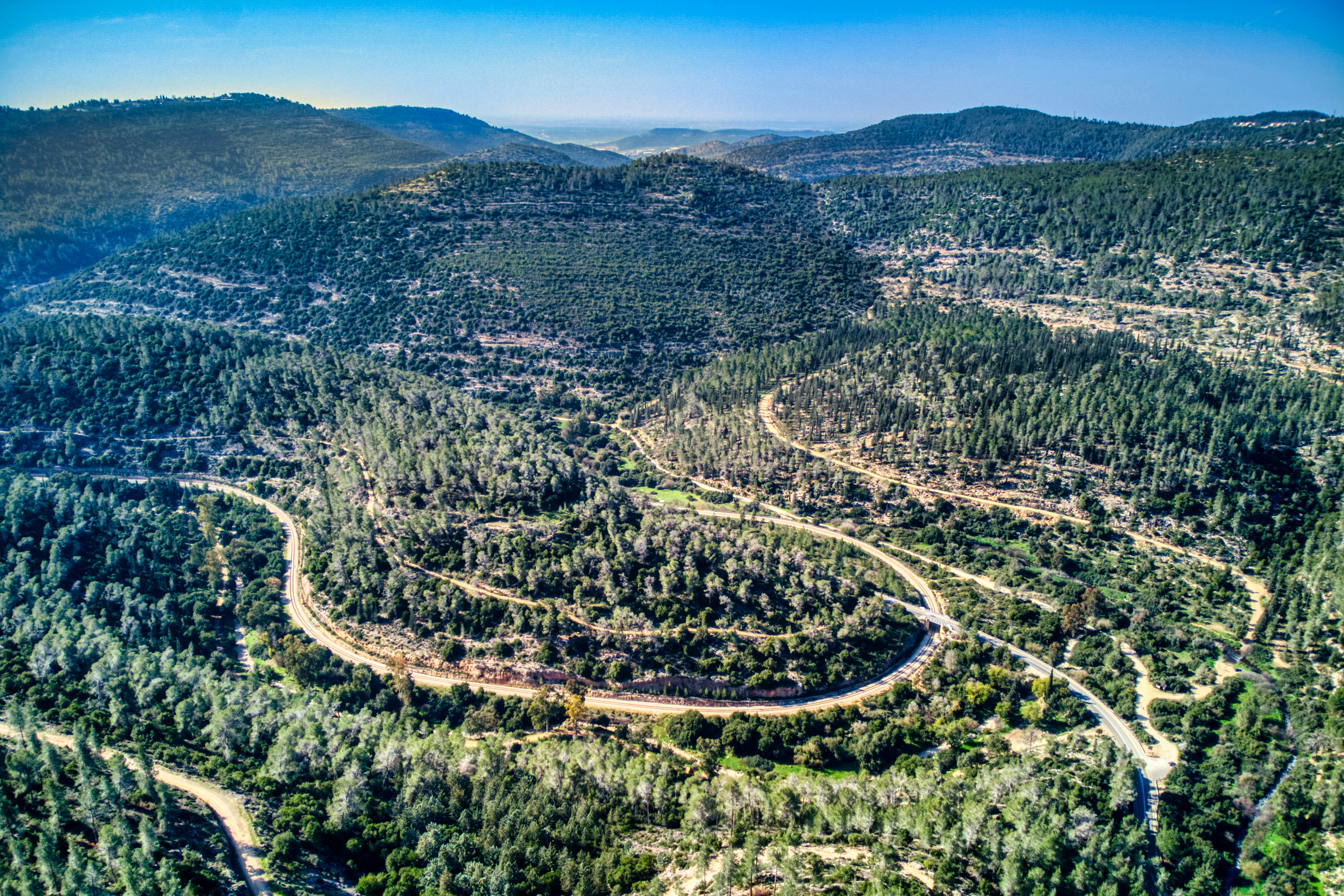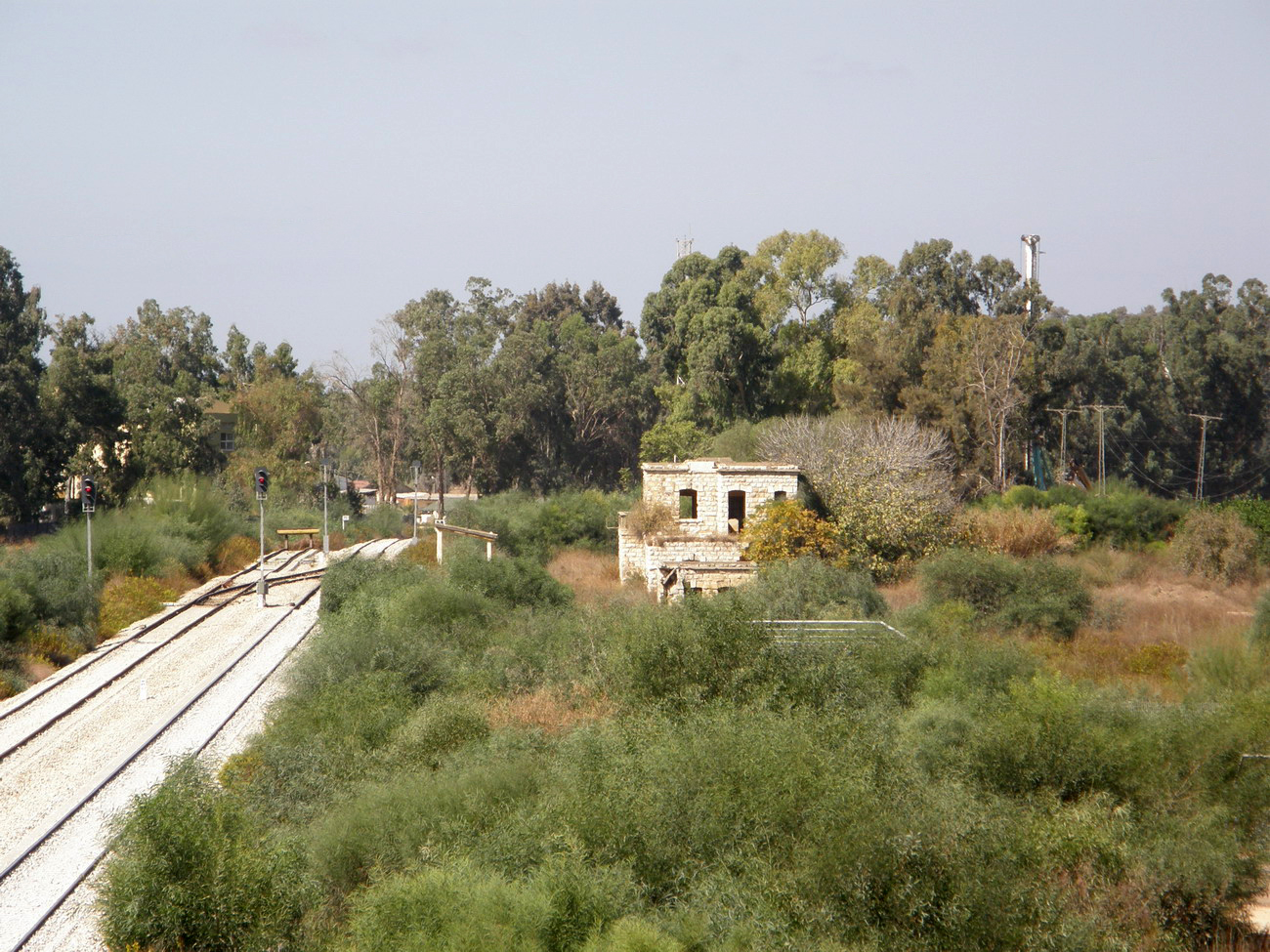Sorek Valley on:
[Wikipedia]
[Google]
[Amazon]

 Naḥal Sorek (; ), also Soreq, is one of the largest, most important
Naḥal Sorek (; ), also Soreq, is one of the largest, most important
 In the 19th century, Nahal Sorek served as an important connection between the two major cities in the area,
In the 19th century, Nahal Sorek served as an important connection between the two major cities in the area,
With desalination, a once unthinkable water surplus is possible
''The Times of Israel''
File:Nahal Sorek.jpg, Distant mountain rising above Nahal Sorek
File:Steep mountain slopes rising above Nahal Sorek.jpg, Forested mountains above Nahal Sorek
File:ValleyOfSorek.jpg, Running waters of brook in Nahal Sorek
File:General view of Nahal Sorek as seen from Tur Shimon eastward.jpg, Looking towards the east from Tur Shimon
File:View of Tur Shimon (Hurvat Tura) in Nahal Sorek.jpg, View of Tur Shimon in Nahal Sorek
File:Ancient wall of Tur Shimon.jpg, Ancient wall of Tur Shimon (Hurvat Tura)
File:Olive press in Nahal Sorek, below Tur Shimon.jpg, Remnants of material culture in Nahal Sorek
File:Nahal Sorek seen from Horvat Tura (Tur Shimon).jpg, View of Nahal Sorek from the ruins of Tur Shimon
File:Hurvat Tura (Tur Shimon).jpg, Tur Shimon rising from Nahal Sorek
File:Soreq026.jpg, The place where the Sorek valley empties into the sea
File:SorekWastewaterTreatmentPlantRoad386NahalSorekFeb142023 03.jpg, Sorek

 Naḥal Sorek (; ), also Soreq, is one of the largest, most important
Naḥal Sorek (; ), also Soreq, is one of the largest, most important drainage basin
A drainage basin is an area of land in which all flowing surface water converges to a single point, such as a river mouth, or flows into another body of water, such as a lake or ocean. A basin is separated from adjacent basins by a perimeter, ...
s in the Judean Hills
The Judaean Mountains, or Judaean Hills (, or ,) are a mountain range in the West Bank and Israel where Jerusalem, Bethlehem, Hebron and several other biblical sites are located. The mountains reach a height of . The Judean Mountains can be div ...
. It is mentioned in the Book of Judges
The Book of Judges is the seventh book of the Hebrew Bible and the Christian Old Testament. In the narrative of the Hebrew Bible, it covers the time between the conquest described in the Book of Joshua and the establishment of a kingdom in the ...
16:4 of the Bible
The Bible is a collection of religious texts that are central to Christianity and Judaism, and esteemed in other Abrahamic religions such as Islam. The Bible is an anthology (a compilation of texts of a variety of forms) originally writt ...
as the border between the ancient Philistines
Philistines (; LXX: ; ) were ancient people who lived on the south coast of Canaan during the Iron Age in a confederation of city-states generally referred to as Philistia.
There is compelling evidence to suggest that the Philistines origi ...
and the Tribe of Dan
The Tribe of Dan (, "Judge") was one of the twelve tribes of Israel, according to the Torah. According to the Hebrew Bible, the tribe initially settled in the hill lands bordering Tribe of Ephraim, Ephraim and Tribe of Benjamin, Benjamin on the ...
of the ancient Israelites
Israelites were a Hebrew language, Hebrew-speaking ethnoreligious group, consisting of tribes that lived in Canaan during the Iron Age.
Modern scholarship describes the Israelites as emerging from indigenous Canaanites, Canaanite populations ...
. It is known in Arabic
Arabic (, , or , ) is a Central Semitic languages, Central Semitic language of the Afroasiatic languages, Afroasiatic language family spoken primarily in the Arab world. The International Organization for Standardization (ISO) assigns lang ...
as Wadi es-Sarār, sometimes spelled Surar, and by various names along different segments, such as Wadi Qalunya near Motza, Wadi al-Tahuna, and Nahr Rubin further downstream.
Etymology
Folk etymology mentioned in theMidrash
''Midrash'' (;"midrash"
. ''Random House Webster's Unabridged Dictionary''. ; or ''midrashot' ...
(''Numbers Rabbah'' 9) states that the ''sorek'' is a "fruitless tree" (the word means "empty" in Hebrew), implying a moral lesson and . ''Random House Webster's Unabridged Dictionary''. ; or ''midrashot' ...
metaphor
A metaphor is a figure of speech that, for rhetorical effect, directly refers to one thing by mentioning another. It may provide, or obscure, clarity or identify hidden similarities between two different ideas. Metaphors are usually meant to cr ...
suggesting that Samson's involvement in his affair with Delilah was eventually "fruitless".
Etymology suggests that "sorek" means "special vine" and refers to the grape
A grape is a fruit, botanically a berry, of the deciduous woody vines of the flowering plant genus ''Vitis''. Grapes are a non- climacteric type of fruit, generally occurring in clusters.
The cultivation of grapes began approximately 8,0 ...
s and wine
Wine is an alcoholic drink made from Fermentation in winemaking, fermented fruit. Yeast in winemaking, Yeast consumes the sugar in the fruit and converts it to ethanol and carbon dioxide, releasing heat in the process. Wine is most often made f ...
s grown in the area.
In the Bible
Nahal Sorek was the place where Delilah lived, andSamson
SAMSON (Software for Adaptive Modeling and Simulation Of Nanosystems) is a computer software platform for molecular design being developed bOneAngstromand previously by the NANO-D group at the French Institute for Research in Computer Science an ...
came to meet her for the first time. It was also the place she enticed him to tell her the secret of his strength, and where he was eventually captured by the Philistines:
Land property along the river
In 1921, lands that bounded Nahal Sorek () which passed to the south of Artuf were designated as "Mara land," meaning, pasture land reserved primarily for the use of the adjoining villages.Road and railway
 In the 19th century, Nahal Sorek served as an important connection between the two major cities in the area,
In the 19th century, Nahal Sorek served as an important connection between the two major cities in the area, Jaffa
Jaffa (, ; , ), also called Japho, Joppa or Joppe in English, is an ancient Levantine Sea, Levantine port city which is part of Tel Aviv, Tel Aviv-Yafo, Israel, located in its southern part. The city sits atop a naturally elevated outcrop on ...
and Jerusalem
Jerusalem is a city in the Southern Levant, on a plateau in the Judaean Mountains between the Mediterranean Sea, Mediterranean and the Dead Sea. It is one of the List of oldest continuously inhabited cities, oldest cities in the world, and ...
. Because railways at the time were reliant on water sources, several surveyors who planned the first railway in the Middle East
The Middle East (term originally coined in English language) is a geopolitical region encompassing the Arabian Peninsula, the Levant, Turkey, Egypt, Iran, and Iraq.
The term came into widespread usage by the United Kingdom and western Eur ...
, the Jaffa–Jerusalem line, decided to use Nahal Sorek as the main route for the line. The line was inaugurated in 1892, following Nahal Sorek until its junction with the Valley of Rephaim, after which it follows the Valley of Rephaim into Jerusalem. While the Tel Aviv-to-Jerusalem high-speed railway line is designed to avoid the Nahal Sorek route and shorten the line, the older railway along Nahal Sorek has been refurbished and remains in use. It connects the country's two largest cities and its main international airport, running in a westerly-easterly direction between Tel Aviv
Tel Aviv-Yafo ( or , ; ), sometimes rendered as Tel Aviv-Jaffa, and usually referred to as just Tel Aviv, is the most populous city in the Gush Dan metropolitan area of Israel. Located on the Israeli Mediterranean coastline and with a popula ...
, Ben Gurion International Airport, Lod, Ramla
Ramla (), also known as Ramle (, ), is a city in the Central District of Israel. Ramle is one of Israel's mixed cities, with significant numbers of both Jews and Arabs.
The city was founded in the early 8th century CE by the Umayyad caliph S ...
, Beit Shemesh
Beit Shemesh () is a city council (Israel), city located approximately west of Jerusalem in Israel's Jerusalem District. A center of Haredi Judaism and Modern Orthodoxy, Beit Shemesh has a population of 170,683 as of 2024.
The city is named afte ...
and Jerusalem. However, today the rail line mainly serves as a scenic route used by tourists. Several small water reservoirs exist along its route, notably near Tal Shahar and Yesodot. Waterfalls are located on several of its tributaries, including Ayanot Dekalim in Beit Shemesh
Beit Shemesh () is a city council (Israel), city located approximately west of Jerusalem in Israel's Jerusalem District. A center of Haredi Judaism and Modern Orthodoxy, Beit Shemesh has a population of 170,683 as of 2024.
The city is named afte ...
, Ein Sifla on Nahal HaMe'ara, and others.
Nature Reserve
The Nahal Sorek Nature Reserve, first declared in 1965, and since expanded, spans over 11000dunam
A dunam ( Ottoman Turkish, Arabic: ; ; ; ), also known as a donum or dunum and as the old, Turkish, or Ottoman stremma, was the Ottoman unit of area analogous in role (but not equal) to the Greek stremma or English acre, representing the amo ...
s, from the Avshalom Cave Nature Reserve near Beit Shemesh, to moshav
A moshav (, plural ', "settlement, village") is a type of Israeli village or town or Jewish settlement, in particular a type of cooperative agricultural community of individual farms pioneered by the Labour Zionists between 1904 and 1 ...
Nes Harim.
Desalination plants
Near the mouth of the Sorek River are two large seawaterdesalination
Desalination is a process that removes mineral components from saline water. More generally, desalination is the removal of salts and minerals from a substance. One example is Soil salinity control, soil desalination. This is important for agric ...
plants, Palmachim and Sorek, the latter being, when used at full capacity, the largest of its kind in the world (as of 2013).Sales, Ben (May 30, 2013With desalination, a once unthinkable water surplus is possible
''The Times of Israel''
Gallery
Wastewater Treatment
Wastewater treatment is a process which removes and eliminates contaminants from wastewater. It thus converts it into an effluent that can be returned to the water cycle. Once back in the water cycle, the effluent creates an acceptable impact on ...
Plant in Nahal Sorek, near Road 386
See also
* Nahal Sorek Regional Council, administrative district in central Israel situated along Sorek Valley * Soreq Nuclear Research Center, a research and development institute * Timnah, Philistine city mentioned in the Bible, identified with Tel Batash in the Sorek Valley * Zorah, biblical town in Judah, identified with a site overlooking the Sorek ValleyReferences
{{DEFAULTSORT:Sorek Hebrew Bible rivers Rivers of Israel Geography of Israel